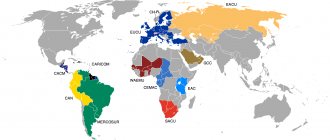Home — Articles
The International Convention on the Simplification and Harmonization of Customs Procedures was signed in Kyoto in 1973. In 1999, in Brussels, the World Customs Organization approved a new version of the Convention, which entered into force on February 3, 2006, after 40 contracting parties to the Convention completed the necessary ratification procedures and accessions. The Kyoto Convention is a guideline in building a mechanism for customs regulation and unification of customs legislation in countries seeking to develop international trade.
In accordance with the Convention, simplification and harmonization are achieved through the application of the following principles:
— predictability, consistency and openness in the application of customs procedures and methods, their continuous improvement;
— providing interested parties with all necessary information regarding customs legislation;
— use of modern working methods, such as control based on risk management and customs audit;
— the widest possible use of information technologies, including electronic forms of registration, transmission, storage and processing of data;
— interaction with other government agencies and representatives of the trading community;
— implementation of relevant international standards, etc.
Countries that have acceded to the Convention are obliged to bring their customs legislation into compliance with it. Under the terms of the Convention, the establishment by a contracting party in its national customs legislation of more favorable conditions than those provided for by the Convention is not only allowed, but encouraged.
Note! From the provisions of Ch. 10 “Customs Appeals” of the General Annex to the Kyoto Convention states that the initial complaint is submitted to the customs service, and the court is the final body in this process. In accordance with the customs legislation of the Customs Union, an interested person has the right, at his own discretion, not only to file an initial complaint with the customs authority and then continue the appeal in court, but also to immediately go to court, bypassing the departmental appeal procedure.
The structure of the Kyoto Convention is as follows:
1) Protocol on amendments to the International Convention on the Simplification and Harmonization of Customs Procedures dated June 26, 1999;
2) the main text of the Convention;
3) applications to it:
— General Annex (hereinafter referred to as the GP);
— special annexes (hereinafter referred to as SP), which, in fact, contain provisions of interest for discussion.
Currently under consideration in the State Duma during the autumn session is the bill “On customs regulation in the Russian Federation”, aimed at regulating the reference norms of the Customs Code of the Customs Union (hereinafter referred to as the Customs Code of the Customs Union). The bill, which largely complies with the principles of the Kyoto Convention, was adopted by the State Duma in the first reading in June 2010.
Introduction
The relevance of the topic of the work lies in the fact that international treaties, in accordance with Part 4 of Article 13 of the Constitution of the Russian Federation, are an integral part of the legal system of Russia. In a broad socio-legal sense, this means that legal statehood in the Russian Federation is based not only on the principles enshrined in domestic legislation, but also on generally recognized standards accepted in the international community.
In more specific legal terms, the following provisions follow from this provision:
- It is stated that the generally recognized principles and norms of international law, in principle, do not contradict the Constitution and normative legal acts that make up the legal system of the Russian Federation;
- The Constitution goes much further in recognizing the priority of international treaties of the Russian Federation over the norms of national legislation;
- Law enforcement agencies, within the limits of their competence, not only have the right, but also the obligation to apply the norms of international treaties to resolve specific cases, and individuals and legal entities and other entities have the right to resort to the norms of international law mandatory for the Russian Federation in order to protect their rights.
The article examines an important norm of international law in the field of customs activities - the Kyoto Convention as amended in 1999. The purpose of the work is to provide a legal description of this international agreement.
In accordance with the goal, the tasks of the work are as follows:
- Analysis of the structure of the Kyoto Convention and its General Annex; Simplification of the convention, harmonization of customs procedures
- Analysis of the problems of bringing Russian customs legislation into compliance with the Kyoto Convention.
Chapter 3. Management of the Convention.
2.1. Steering Committee.
2.1.1. (a) makes recommendations to Contracting Parties:
2.1.1.1. - in relation to amendments to the Main Part of this Convention;
2.1.1.2. - regarding amendments to the General Annex, Special Annexes and their Chapters, as well as the inclusion of new Chapters in the General Annex;
2.1.1.3. - regarding the inclusion of new Special Annexes and new Chapters in Special Annexes;
2.1.2. (b) may decide to amend Practice Guidelines or to include new Practice Guidelines in Specific Annexes or Chapters thereof;
2.1.3. (c) consider the procedure for implementing the provisions of this Convention in accordance with paragraph 4 of Article 13;
2.1.4. (d) revises and updates the text of the Recommendations;
2.1.5. (e) consider any other matters relating to this Convention which may be referred to it;
2.1.6. (f) inform the Standing Technical Committee and the Council of its decisions.
Structure of the Kyoto Convention and contents of the general annex
The International Convention on the Simplification and Harmonization of Customs Procedures was concluded in Kyoto in 1973. Members of the Convention are 60 states, as well as the European Community and almost all the leading states of the world. In 1999, the World Customs Organization in Brussels approved the New Edition of the Convention. This new version of the Convention is sometimes called the Revised Kyoto Convention, the Kyoto Convention as amended by the Brussels Protocol.
According to the terms of the Brussels Protocol, the new version of the Convention must enter into force three months after the 40 Contracting Parties have completed the relevant ratification/accession procedures. The purpose of the Convention is to simplify and harmonize customs procedures and regulations. The Convention, on the one hand, is aimed at stimulating foreign trade activities by simplifying and speeding up customs clearance and customs control procedures, and on the other, ensuring that such acceleration and simplification does not lead to leveling out the interests of the state and society in terms of collecting duties and taxes, protection of the domestic market and other interests of the state and the economy as a whole, so that customs authorities can effectively solve the problems facing them by taking control measures based on audit and risk management methods. That is why the Kyoto Convention is a guideline in building customs regulation in many countries. In addition, the Kyoto Convention is the basis for the unification of customs legislation in different countries.
The provisions of the Convention are formulated in the form of principles, which, in fact, are the basis for the development of specific rules for regulating certain procedures based on this principle, as well as for finding a compromise between the interests of the business community and the state.
Structurally, the Convention consists of the Protocol on Amendments to the International Convention on the Simplification and Harmonization of Customs Procedures of June 26, 1999, the text of the Convention itself and its annexes - the General Annex and Special Annexes, which, in fact, contain provisions of interest for discussion.
The General Annex contains the basic principles and rules of customs regulation; its provisions apply to all customs institutions (control, registration, regimes, payments). Acceptance of the General Annex as well as the actual text of the Convention is mandatory for accession to the Convention. As for the Special Annexes, when acceding to the Convention, a Contracting Party may accept any of them or any chapter of a special annex, or not accept any special annexes at all.
Under the terms of the Convention, a Contracting Party to the Convention is not only allowed, but also encouraged to establish in its national legislation on customs regulation more favorable conditions than those provided for by the Convention, i.e. if any part of the customs regulation of the Russian Federation provides for more favorable conditions than Since this is provided for by the Convention, there is no need to change them and bring them into strict compliance with the Convention.
It is impossible not to mention the Recommendations of the World Customs Organization to the Kyoto Convention. Recommendations and clarifications on the application of the provisions of the Convention. Since, as mentioned above, many provisions of the Convention are formulated in the form of a principle, approach, recommendations reflect a generalization of international experience in applying the convention. However, these recommendations are not binding on the Contracting Party.
It is known that it came into force on January 1, 2004. The Customs Code of the Russian Federation is based on the customs legislation of other countries (European Community, USA), which takes into account the principles of the Kyoto Convention, as well as the actual provisions of the Kyoto Convention. To what extent are the principles of the Kyoto Convention reflected in the Labor Code of the Russian Federation? The rules of the General Annex are formulated in the form of Model Rules and Model Rules with a Transitional Period. For a Contracting Party, the application of both Standard Rules and Standard Rules with a Transitional Period is mandatory, but with the difference that for a Standard Rule with a Transitional Period
The transition period provides for a longer period of application. The general application consists of 10 chapters:
- Chapter 1-General Provisions
- Chapter 2-Definition of concepts
- Chapter 3 - Customs clearance and other customs formalities
- Chapter 4 - Duties and Taxes
- Chapter 5-Guarantees
- Chapter 6-Customs control
- Chapter 7 - Application of information technology
- Chapter 8. Relations between the customs service and third parties
- Chapter 9 - Information, decisions and regulations of the Customs Service
- Chapter 10 - Appeal on customs issues
As can be seen from this list and as indicated above, the General Annex contains rules relating to the organization of customs affairs as a whole, some basic general principles.
A comparison of the provisions of the General Annex and the Labor Code of the Russian Federation shows that there are no conceptual differences between them. Almost all the principles set out in the General Annex are, to one degree or another, reflected in the Labor Code of the Russian Federation and are included in it in whole or in part.
Since the provisions of the Convention are formulated as a general principle, the consistency of national customs legislation with a specific principle of the Kyoto Convention is essentially a matter of interpretation. For example, the Kyoto Convention provides that “the verification of the declaration for goods is carried out simultaneously or as soon as possible after registration of the declaration” (Article 3.30), “in cases where the customs service decides that it is necessary to verify the goods specified in the declaration, such verification is carried out in as soon as possible after registration of the goods declaration” (Article 3.33). In Article 359 of the Labor Code of the Russian Federation, the deadline is three days from the date of acceptance of the customs declaration, submission of documents and presentation of goods. According to the previously valid Labor Code, this period was 10 days.
The Labor Code of the Russian Federation provides for the collection of interest for deferment or installment payment of duties and taxes. Article 4.16 of the Convention provides that “when the collection of duties and taxes is deferred, interest shall not accrue as far as possible.”
At the same time, there are certain discrepancies between our customs legislation and the General Annex to the Kyoto Convention. For example, the Kyoto Convention does not use the term “customs regime” - the Convention uses the term “customs procedure”. Our customs legislation does not fully reflect the provisions of the convention on the organization of customs control with neighboring customs services. In other cases, the provisions of the Convention are partially enshrined in Russian customs legislation. For example, Standard Rule 3.2. The Kyoto Convention provides for the principle enshrined in our customs legislation, according to which customs clearance is carried out outside the locations and outside the working hours of customs authorities. But at the same time, this standard rule provides that customs clearance fees should be limited to the approximate value of the services provided. In our opinion, the current system of collecting fees for customs clearance in the Russian Federation does not reflect this principle; in fact, the system of collecting fees for customs clearance is based on the value of goods.
One more example. When establishing the provisions on consultation on customs matters in the Customs Code of the Russian Federation (which corresponds to the requirements of the Convention), Article \C. The Convention states that the consultation must provide not only the requested information, but also any other relevant information that the Customs Service deems appropriate to communicate to information of the person concerned. However, this approach seems to be very important, since the applicant does not always, out of ignorance, put all the questions in his request, assuming an exhaustive answer to the questions posed.
The procedure for the actual application of the provisions of the Convention is such that the Russian Federation will have enough time to bring its customs legislation into full compliance with the Convention. In addition to the fact that the Convention enters into force for a Contracting Party 3 months after the implementation of the relevant procedures, that Party must begin to apply the standard rules no later than 36 months, and the standard rules with a transition period no later than 60 months from the date of entry into force of the Convention for the Contracting Party Parties.
Chapter 1. Definitions.
1.1. a) standard
1.1.1. A provision the implementation of which is considered necessary to achieve harmonization and simplification of customs procedures and practices.
1.2. b) Transitional standard
1.2.1. General Annex standard for which a longer period of implementation is allowed.
1.3. c) Recommendation for practical application
1.3.1. A provision of the Special Annex recognized as an advance in the harmonization and simplification of customs procedures and practices, the widest possible application of which is considered desirable.
1.4. d) National legislation
1.4.1. Laws, regulations and other measures established by the competent authority of a Contracting Party and subject to application throughout the territory of that Contracting Party, or international treaties that have entered into force under which that Party has assumed obligations.
1.5. e) General Annex
1.5.1. A set of provisions applicable to all customs procedures and practices referred to in this Convention.
1.6. f) Special application
1.6.1. A set of provisions applicable to one or more customs procedures or practices referred to in this Convention.
1.7. g) Recommendations
1.7.1. A set of explanations to the provisions of the General Annex, Special Annexes and their Chapters, indicating some of the possible actions taken to apply the Standards, Transitional Standards and Recommendations for Practical Application.
1.8. h) Standing technical committee
1.8.1. Standing Technical Committee of the Council
1.9. i, j) Advice
1.9.1. Organization established by the Convention establishing the Customs Cooperation Council, concluded at Brussels on December 15, 1950
1.10. k) customs or economic union
1.10.1. a union established by its member states, which is competent to adopt its own regulations binding on those states on matters governed by this Convention


